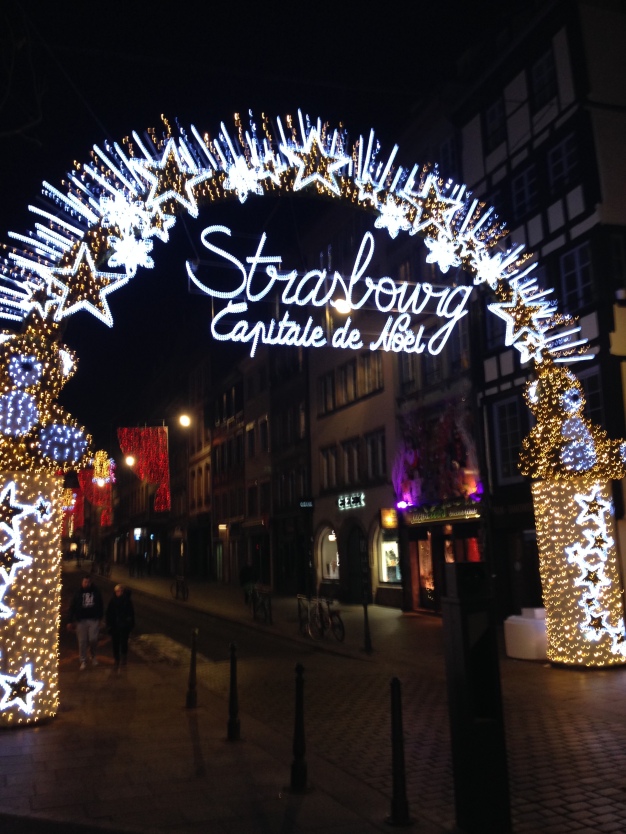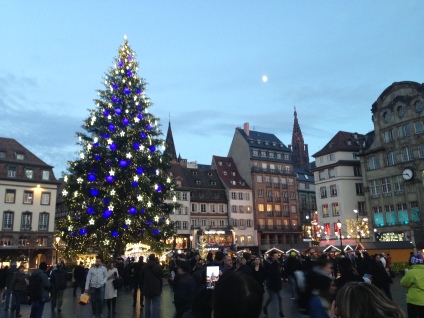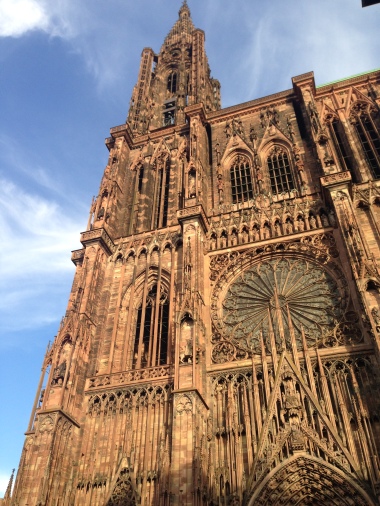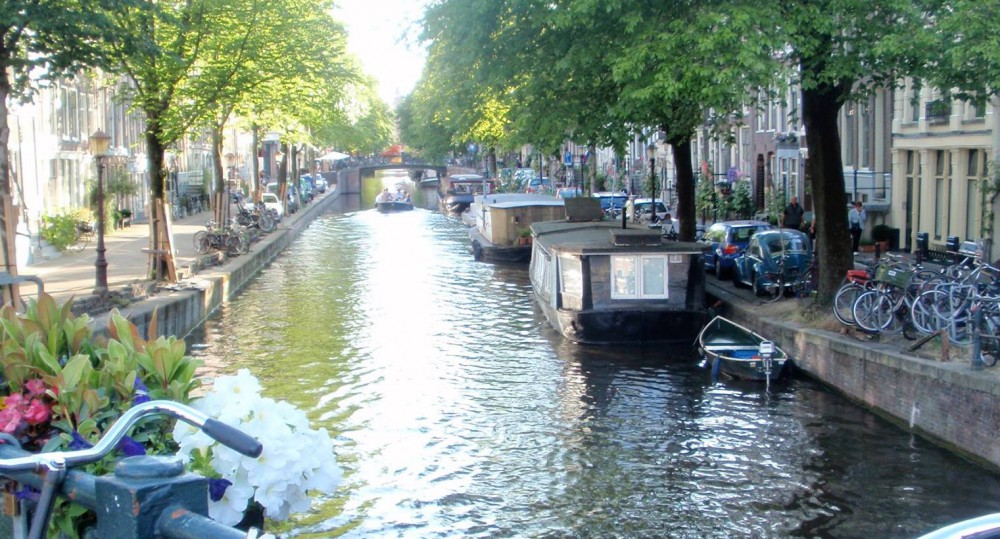Last December, just before heading back to the US for the holidays, we took a quick weekend trip to Paris. Somehow we had spent the whole year in Amsterdam without ever jumping on the Thalys, and I was determined that we would get to France before 2015 ended. It was unseasonably warm, making what is already a great strolling city even more irresistible. We told ourselves we were going for the Christmas market, but to be honest, the setup along the Champs Elysee was disappointing: tacky, touristy, over-lit stalls hawking cheap ornaments and barbe a papa. We enjoyed Paris (because, after all, it’s Paris), but we didn’t feel like we had the traditional European Christmas experience we were looking for.

Well, we more than made up for that error this year, when we chose to go to Strasbourg, the “Capital of Christmas”. Strasbourg claims the oldest Christmas market in Europe – theirs began, they say, in 1570. I don’t know what it was like back then, but today it is a well-organized event that consumes Strasbourg’s Grande Ile, bringing in about 2 million visitors over a 4-week period. And, as we were told by the charming 4th generation wine maker we met, 1 million of those visitors will be carrying a cup of gluhwein.
 Gluhwein is a mulled and spiced wine, which we first encountered here in Amsterdam last winter. On a cold winter afternoon or evening, it is just what you want to warm you up. The selling of gluhwein in Strasbourg is so organized that there are standardized plastic cups used by every vendor. You pay a 1 euro deposit for the first one, and then every time you buy another glass, you swap your old cup for a new one. The used cups are picked up every night, washed and redistributed the next day.
Gluhwein is a mulled and spiced wine, which we first encountered here in Amsterdam last winter. On a cold winter afternoon or evening, it is just what you want to warm you up. The selling of gluhwein in Strasbourg is so organized that there are standardized plastic cups used by every vendor. You pay a 1 euro deposit for the first one, and then every time you buy another glass, you swap your old cup for a new one. The used cups are picked up every night, washed and redistributed the next day.
We learned this and lots of other fun facts during our almost-2-hour adventure with Food and City Tours. We’ve gotten a bit hooked on food tours, and they’ve become our preferred way to get to know a city. Our culinary tour of the Christmas market was led by Virginie, who was friendly and charming and very knowledgeable. At 4pm on a Saturday, the market is wall-to-wall people, and Virginie did a great job navigating our group of 10 through the very crowded lanes. We enjoyed gingerbread, kuglehopf cake, butter cookies, and, of course, gluhwein (this time, made with white wine). Virginie introduced us to the merchants, bakers, and winemakers, and shared some of their history and expertise. This kind of personal interaction is usually a highlight of any food tour. Why travel if not to meet and talk with other people?

As beautiful and festive as the city is, the crowds can be overwhelming. We enjoyed Strasbourg the most when we wandered away from the crush and found some quiet corners. My favorite discovery was the Church of St. Pierre le Jeune. Compared to the long entrance line and marked visitor paths at the Cathedrale de Notre Dame, this church was peaceful and let us wander at our own pace.
The Cathedrale, of course, has its own beauty, especially the exterior. We learned that there are building ordinances in Strasbourg to limit the height of any new buildings; nothing can be taller than the Cathedrale. Its spire can be seen from any point in the city and from miles away.
We left Strasbourg with the expected souvenirs: Christmas ornaments, decorations, cookies, and gingerbread. We also had a few surprises sneak into our bags: new French books for me (hooray for FNAC!) and a Portuguese chorizo. Portugal was the featured guest country at this year’s Christmas market, and we took advantage of this little piece of Portugal in the middle of France. (The chorizo caused some trouble at airport security, but the French know how to deal with a saucisson.)
I left Strasbourg fully in the Christmas spirit – the city pulls out all the stops, so it would have felt ungracious not to go along. It takes its name and its primacy seriously: the Capital of Christmas does not disappoint. Go, enjoy, eat and drink, shop and stroll, and soak up Christmas in all its wonder.
